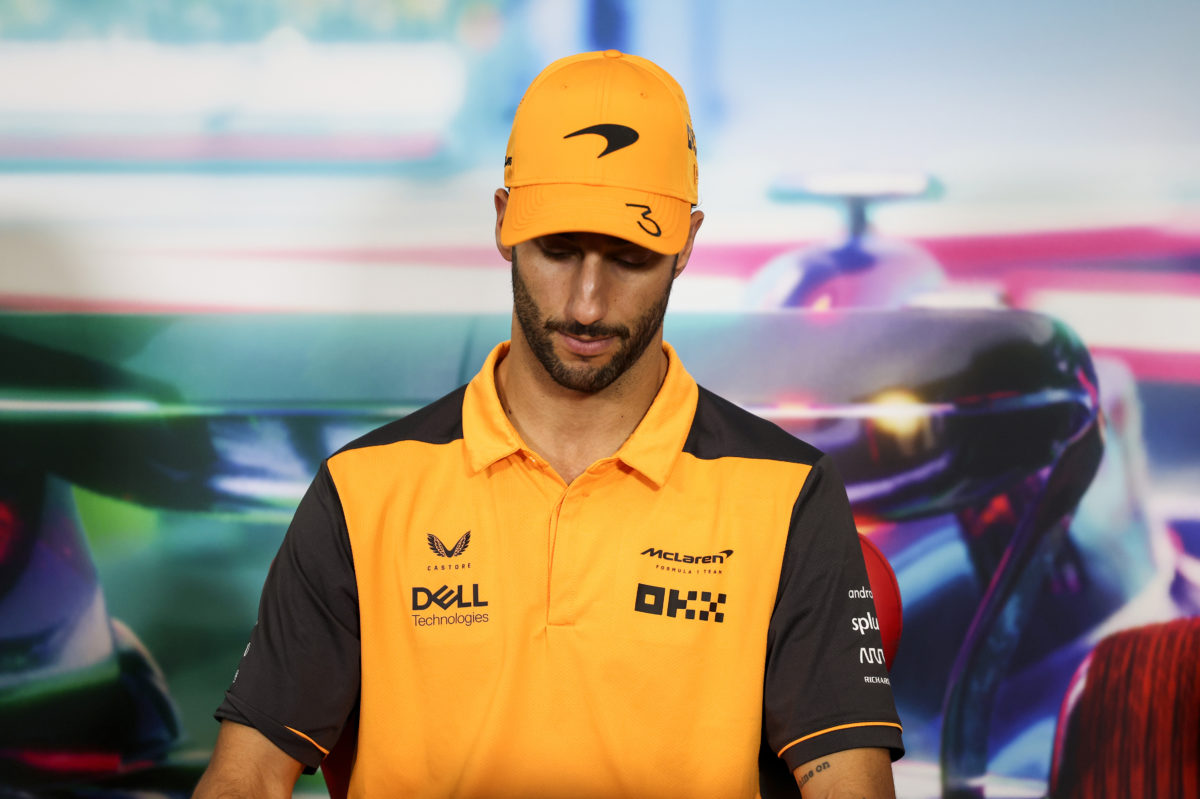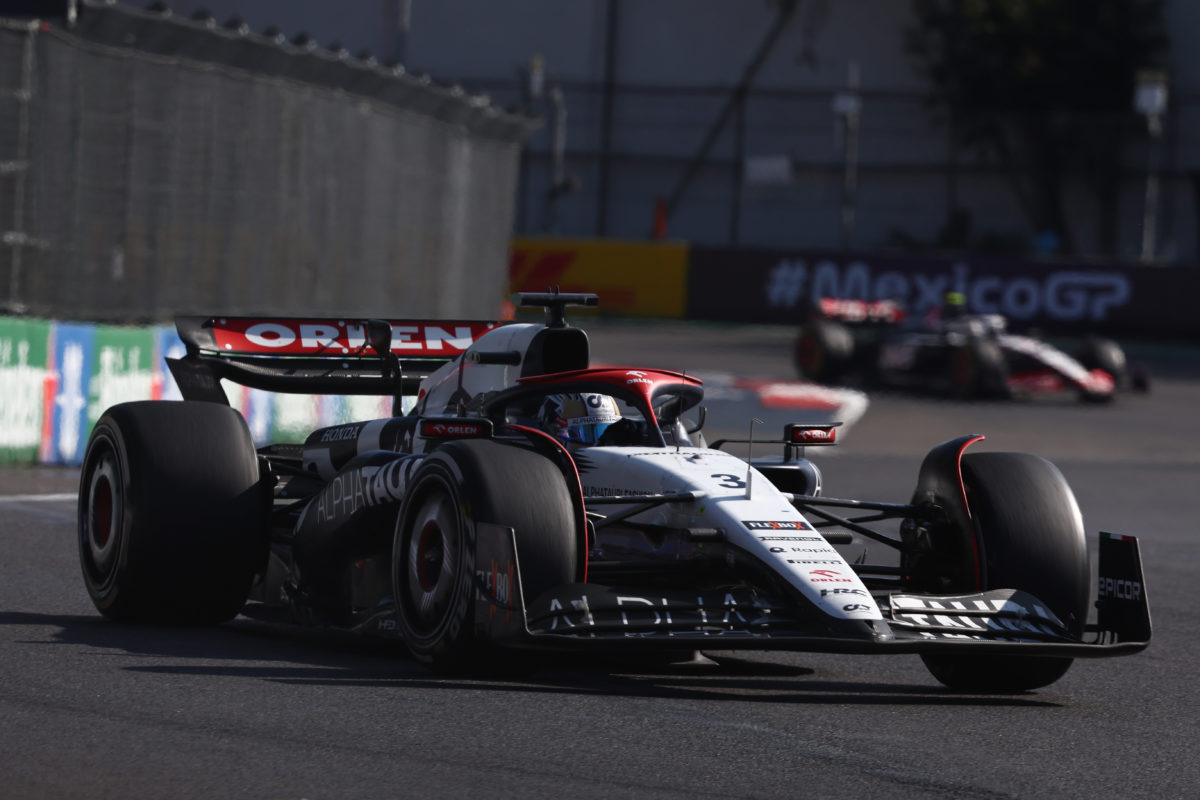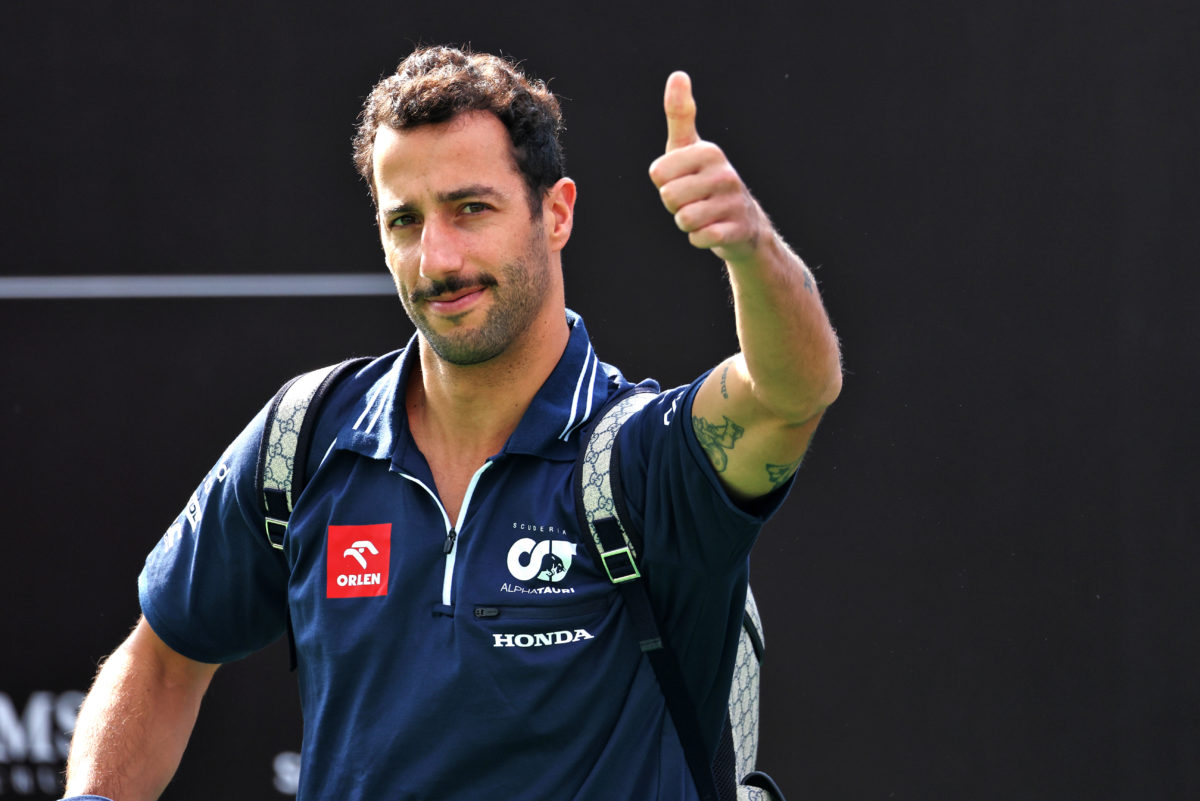

It would appear AlphaTauri has managed to achieve in four grands prix what McLaren failed to do in two years with Daniel Ricciardo.
By any stretch of the imagination, Ricciardo’s fourth place in qualifying for the Mexico City Grand Prix was extraordinary, underlined by the fact he split both Red Bull drivers, notably finishing 0.041s ahead of Sergio Perez, whose seat the 34-year-old has made clear he wants in 2025.
It was no fluke, no freak one-off either. Following Friday practice, Ricciardo’s body language spoke volumes. His trademark beaming smile was in evidence, and he exuded confidence, suggesting he had a top 10 qualifying car, as good as sixth if everything worked out perfectly.
Everything worked out just fine, and then some.
The 71-lap race added another layer to his overall weekend performance. After Perez crashed out at the first corner, Ricciardo was able to keep the Mercedes of Lewis Hamilton at bay for 10 laps, before settling into a comfortable fifth.
It is almost certain he would have finished in that position but for the red-flag period that followed Kevin Magnussen’s heavy crash, compromising him after the restart, and falling to seventh at the chequered flag, albeit hounding the second Mercedes of George Russell for sixth.
Nonetheless, he still delivered AlphaTauri’s best result for 33 races, stretching back to last year’s Azerbaijan Grand Prix.
So why the dramatically different display for Ricciardo and AlphaTauri around the Autodromo Hermanos Rodriguez, and what does it mean for the final three races of this campaign, and going into next season when Ricciardo will again drive for the Faenza-based squad?
The car has generally performed well at the circuit. Two years ago, Pierre Gasly qualified fifth – just behind the Red Bulls of Max Verstappen and Perez – and went on to finish a stunning fourth.
Gasly offered a small degree of insight after qualifying on Saturday as to why Ricciardo had qualified fourth, stating: “I know how they run that car, how they have run it for the last four years.” When pushed, however, the Alpine driver would not expand.
It is known that AlphaTauri’s cooling package works well in the high altitude of Mexico City, whilst trackside engineering director Jonathan Eddolls confirmed the AT04’s recent upgrades also were a factor.
Eddolls also conceded there was “a track-specific element as well”. He added: “You look at the tracks that we’ve typically been good at over the years – Monaco, Singapore, Baku – this has got bits of all of those in it.”
The McLaren years banished

And then there is the Ricciardo factor, or at least what AlphaTauri has been unable to unlock with the Australian in a very short period of time.
At McLaren, Ricciardo’s first year with the team in 2021 was reasonable, with the obvious highlight being his Italian GP victory – albeit an anomaly as it was his only podium that season.
Throughout the course of the campaign, however, Ricciardo was never quite comfortable with the car.
Andrea Stella, then McLaren executive director and now team principal, said in the middle of last season that Ricciardo “came to McLaren, in terms of driving characteristics, I would say from the opposite end.
“He is a driver who likes to roll the speed in the corner, not necessarily attack the braking as much as our car requires.”
With the introduction of new aerodynamic regulations at the start of last season, and a change in philosophy in the car, McLaren and Ricciardo were unable to build on the platform provided by 2021.
What unfolded were long periods of head-scratching as McLaren attempted to marry Ricciardo’s peculiar driving style to the nuances of the MCL36. Despite the best intentions and efforts on both sides, they were forced to accept defeat and part ways, despite a year remaining on the driver’s contract.
But as one door opens, another closes, with Red Bull recalling Ricciardo back to the family he had served in F1 for seven seasons – the initial two with Toro Rosso before promotion and a five-year stint.
In order to prepare Ricciardo as a reserve driver, it first had to pick up the pieces of two damaging years at McLaren.
Shortly after Ricciardo was promoted into AlphaTauri following the sacking of Nyck de Vries, Red Bull team principal Christian Horner said in an interview for The New York Times with this writer: “We’ve spent the last seven months rebuilding him and getting the old Daniel back that we recognised from when he was last with us.
“He had picked up a lot of bad habits. It took some of his old engineering team to unpick some of those and very quickly, and in a virtual world [in the simulator], get him back on a par with what we were used to.”
Highlighting that Ricciardo’s braking technique “had changed dramatically,” Horner added: “He was trying to put a sticking plaster on a weakness of the car. Once we sorted that, then everything started to become more natural.”
At the time, speaking in between his two-race cameo in Hungary and Belgium before breaking a bone in his hand in practice ahead of the third race of his comeback with the Dutch GP, Ricciardo acknowledged Horner’s comments.
“I genuinely do feel that I lost some of my technique, some of my strengths,” he said of his time at McLaren. “Things that had worked in the past weren’t working anymore, so I had to throw them away.
“I’d then try some other stuff and they wouldn’t work, then my confidence would go down, and that was the biggest thing.”
A driver reborn

Red Bull, and now AlphaTauri, have quickly allowed Ricciardo to rediscover his confidence, but how?
Shining a spotlight on just why Ricciardo was able to perform with such distinction in Mexico City, Eddolls said: “We can see that he drives the car differently to some of the other drivers that we have worked with and with Yuki [Tsunoda, current team-mate].
“When you have drivers who drive differently, you can’t have the same car set-up. So when Daniel came, we started to understand that maybe he needed a different direction, a different set-up so he could drive the car in a slightly different way.”
Eddolls confirmed the setup changes were related to both the aero balance and the mechanical side of the car.
“The way he attacks the corners, the way he hits the brakes, so the driving style is different, and not only from the mechanical or aero platform, but we know the Pirelli tyres are quite sensitive,” continued Eddolls.
“So the way he drives we can see different tyre temperatures, different tyre temperature balance, and we’re not talking big numbers, it’s not massive, but we can see differences in the way he drives.
“He makes up lap time in different parts of a corner and therefore exposes different weaknesses of the car to Yuki. He drives it in one way, Daniel in a slightly different way, so we have just needed a slightly different set-up direction for him.”
Ricciardo’s crash at Zandvoort proved to be a spanner in the works, although he conceded that just before he turned into a barrier to avoid Oscar Piastri’s stricken McLaren following his compatriot’s own crash moments earlier, he was starting to feel the car, and on the hard tyres.
The two-month, five-race lay-off was naturally unwelcome, with Ricciardo’s performance across the United States GP far below what he had expected of himself.
There was, however, an extenuating circumstance, as revealed by Eddolls.
“We had a question mark, which is why, when we went to the USA for the sprint, we sort of put him back on the Yuki set-up because the car had developed a lot since [Ricciardo’s crash],” said Eddolls.
“We had brought many aero updates, and the car’s characteristics had changed, so we just went for the safe bet and tried to match. Then he was stuck because it was parc fermé, so that was the frustration of that weekend.
“We came out of it knowing that there was more performance in the package that we didn’t have the opportunity to unlock.”
Across Friday practice in Mexico City, Eddolls states he and his team “hit it hard with various set-ups” before unlocking the right setup for Ricciardo, allowing him to deliver his superb qualifying and race results.
Ricciardo confidence returns

Whilst Ricciardo has always preferred a car that is stable at the rear, allowing him to attack a corner whilst going longer on the brake and providing the required rotation, Eddolls had discovered “a big limitation” for Ricciardo was front-end related.
“With [set-up] directions we have been able to improve the front end of the car for him, accepting the stability, let’s say, as a compromise,” said Eddolls.
“That then impacts the tyre temperatures through the corner and through the lap.”
The end result is a driver and car in unison, a feeling a now confident again Ricciardo has not had for a considerable period of time.
“Probably the car we’ve got, I think with the characteristics, it behaves,” said Eddolls.
“Maybe we haven’t quite got the load or efficiency of some of the top teams, however, there’s no big fundamental weaknesses of the car, other than lacking a bit of load.
“So it’s a car that behaves, he [Ricciardo] knows what it’s going to do, and the fact it does the same thing every lap, corner to corner, it’s given him the confidence to be able to throw the car into the corners and he knows that it’s going to stick and that it’s going to do the same every time.
“Once we got that platform in those couple of races earlier in the season, then we could start working on changing the balance corner to corner, or through a corner with the set-up to try to extract a bit more performance.
“It’s a car that’s given him the confidence to be able to push it closer to the limit than maybe he had at McLaren.”
And whilst Eddolls has warned not to expect a P4 in qualifying from Ricciardo all the time, the good news is his overall form “will continue.”





















Discussion about this post